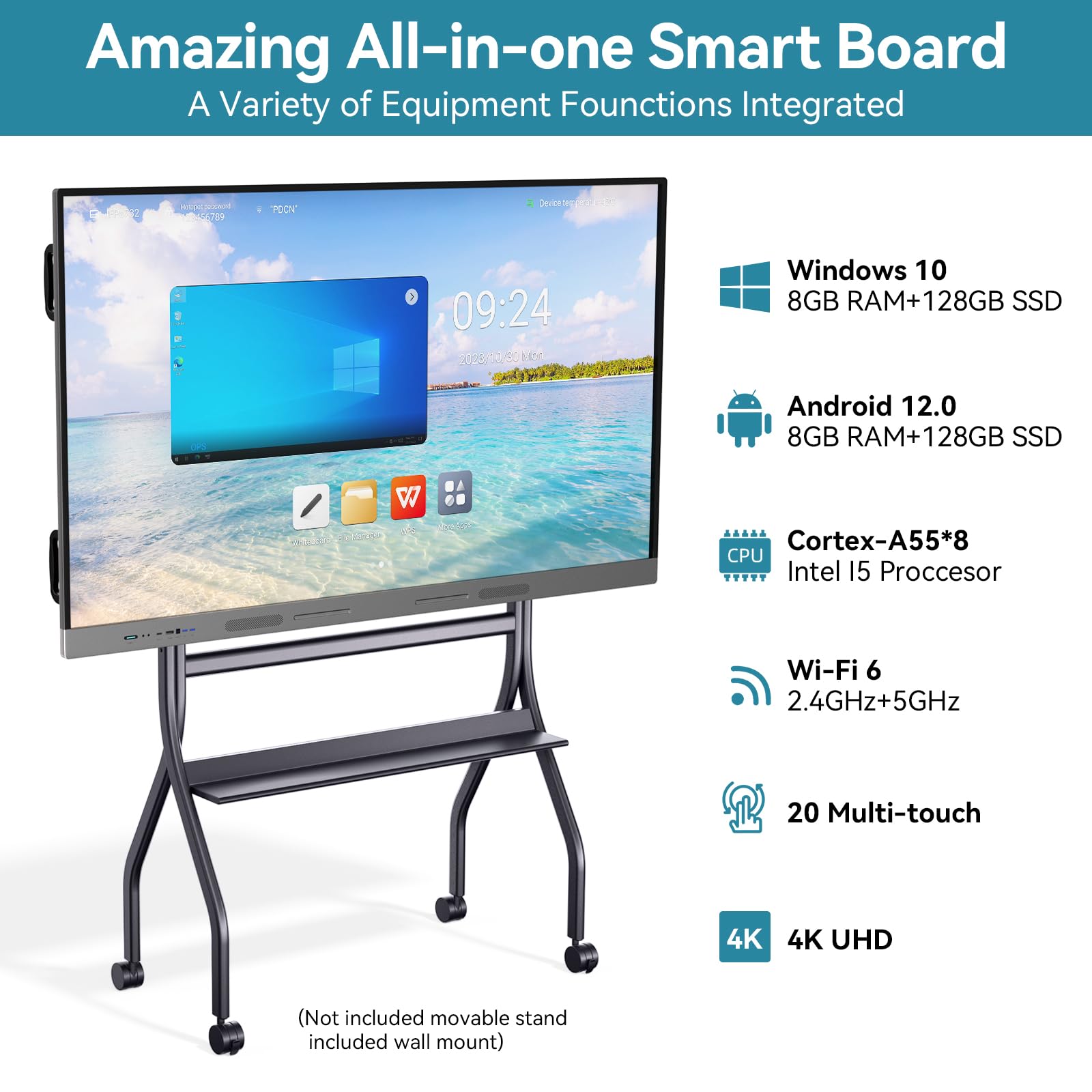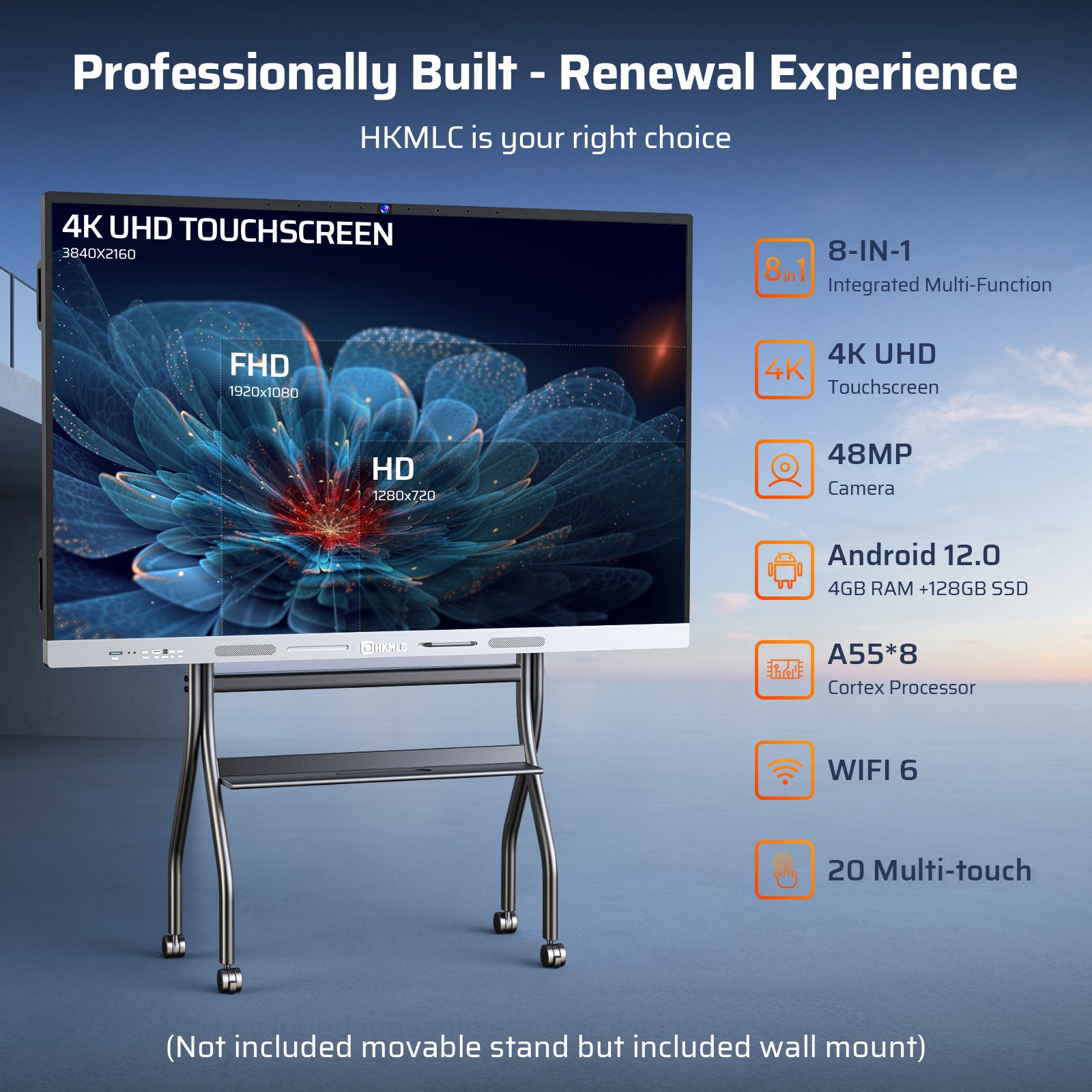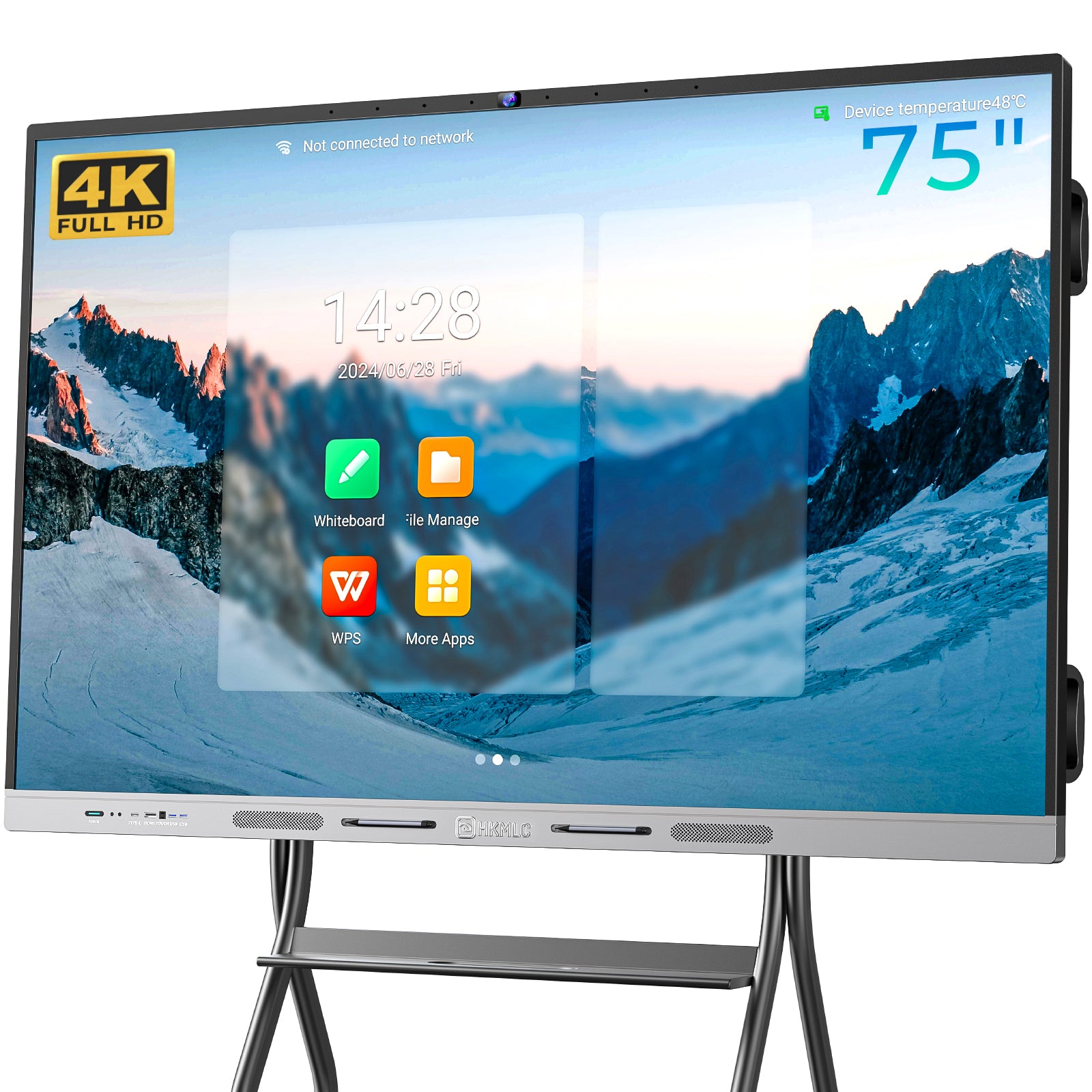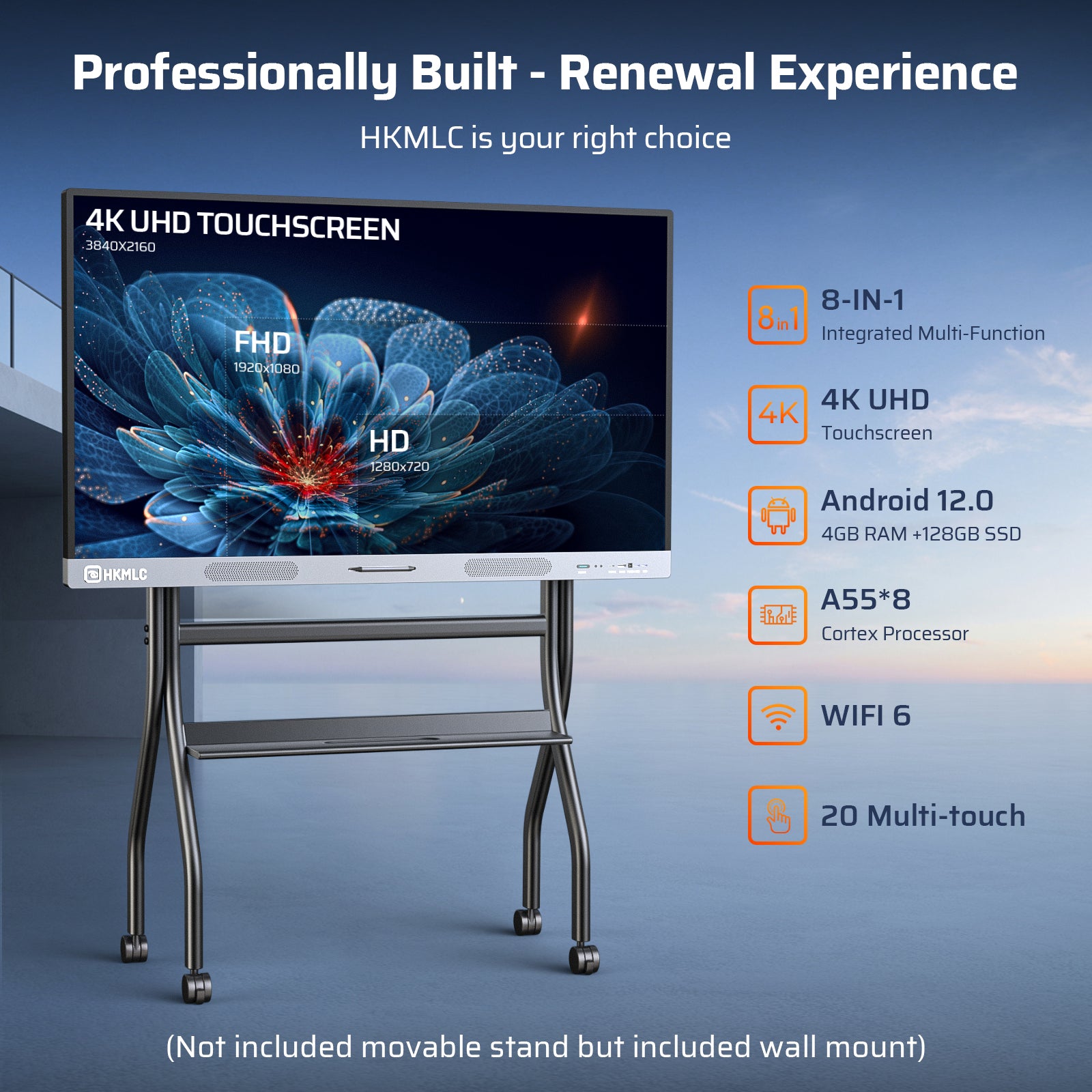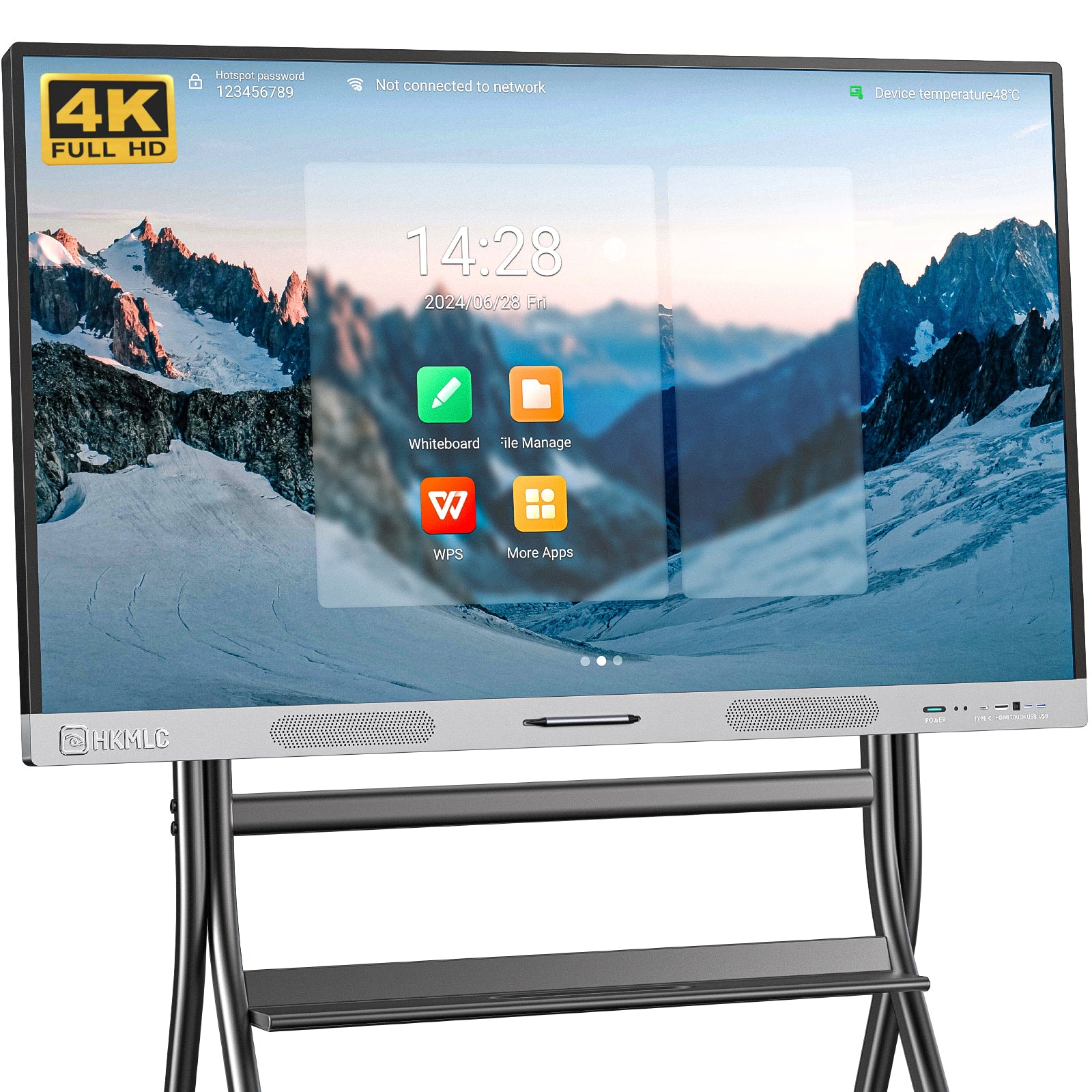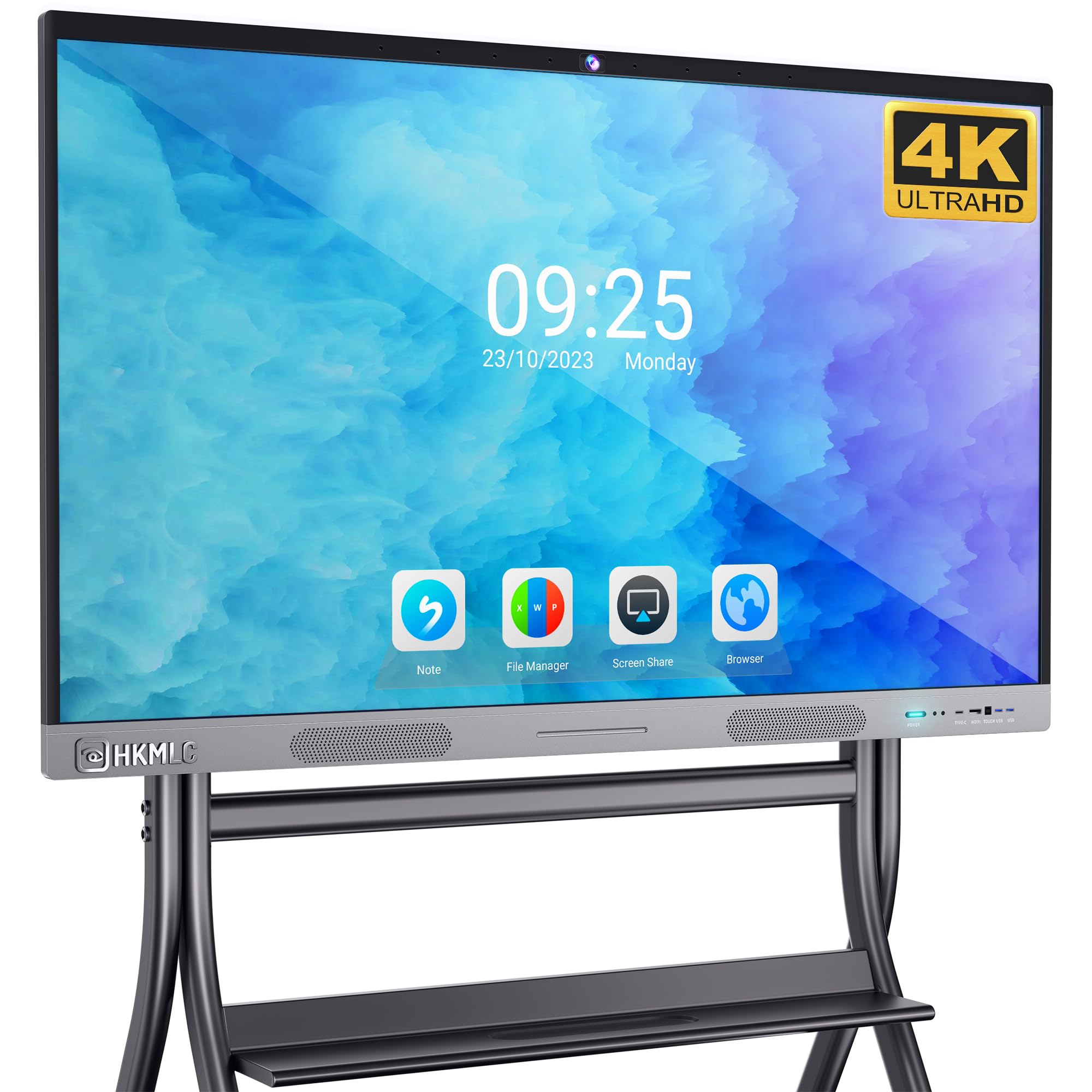The rise of smartboards in the classroom has transformed how teachers engage with students, offering interactive and dynamic ways of presenting lessons. However, with increasing concerns about public health, especially in schools, the best smartboards for teaching in 2024 are now evaluated not only for their performance and features but also for their contribution to health and safety.
In 2024, the demand for anti-microbial smartboards has surged, with over 50,000 classrooms worldwide using germ-resistant interactive displays to create safer environments for students and teachers. This article answers key questions about smart blackboard price, compares the most popular smartboard classroom options, and discusses what to look for in your next smartboard for teaching.
What Is an Anti-Microbial Smartboard?
An anti-microbial smartboard is an interactive display equipped with a surface that resists the growth of harmful bacteria and germs. This protection is often achieved through coatings infused with silver-ion nanotechnology or other anti-microbial materials. These materials disrupt the cellular functions of microorganisms, preventing them from growing on the surface of the smartboard.
In healthcare, anti-microbial technologies have been standard for years in devices such as surgical lights, touch panels, and equipment used in sterile environments. The education sector adopted this technology in 2017 when BenQ introduced the first anti-microbial smartboard for schools. Today, over 50,000 classrooms use these displays to reduce germ transmission. However, not all smartboards are equipped with anti-microbial features, and the quality of anti-microbial coatings varies between brands.
Do All Smartboards Have Anti-Microbial Screens?
No, not all smartboards feature anti-microbial coatings. Many smartboards for classrooms still require manual cleaning with diluted bleach solutions to prevent germ spread. Without the correct cleaning protocols, using strong cleaning solutions can damage the board's surface, including the anti-glare coating.
Some smartboards, such as those offered by BenQ, use advanced silver-ion nanotechnology to provide a permanent, non-toxic coating baked into the glass at high temperatures. This process ensures that the anti-microbial properties last for the lifetime of the display.
Differences Between Anti-Microbial Displays
The effectiveness and safety of anti-microbial coatings on smartboards can vary. When comparing different smartboards for teaching, consider these three main criteria:
- Types of Germs Certified
Anti-microbial coatings vary in their germ-fighting capabilities. Some coatings are effective only against a few types of bacteria, while others provide broad-spectrum protection against viruses, fungi, and bacteria. Look for third-party certifications from organizations like TÜV or SIAA, which ensure that the coating has been tested against a range of pathogens. For instance, silver-ion nanotechnology is widely used in medical devices like surgical masks due to its effectiveness against various germs.
- Safety of Anti-Microbial Coatings
The safety of anti-microbial coatings is crucial, especially for products used by children. In countries like Japan, SIAA certifications also verify that anti-microbial coatings are safe for long-term contact, checking for potential toxicity, skin irritation, and even DNA mutagenicity. This ensures that the materials are safe for both students and teachers who interact with the smartboard regularly.
- Anti-Microbial Coating Coverage
Besides the screen, some smartboards apply anti-microbial coatings to other high-touch areas, such as pens, remote controls, and the plastic bezels surrounding the display. In a classroom setting, where multiple students and teachers frequently interact with these components, comprehensive anti-microbial coverage is important. Schools should prioritize smartboards that offer complete protection across all touch points.
Comparison of Popular Smartboards in 2024
Below is a comparison of popular anti-microbial smartboards used in classrooms in 2024, focusing on their features, certifications, and safety.
- BenQ RP02 Series
- Anti-Microbial Coating: Silver-ion nanotechnology
- Certification: TÜV and SIAA
- Germ Coverage: Bacteria, viruses, fungi
- Safety Features: Non-toxic, safe for children, resistant to skin irritation and mutagenicity
- Touch Points: Supports up to 20 touch points
- Additional Features: Anti-microbial coatings on pens, remote controls, and bezels
Overview: BenQ leads the market with its RP02 Series, offering full anti-microbial protection. With comprehensive anti-microbial smartboard technology and high-touch area coverage, it’s an excellent choice for schools prioritizing safety and collaboration. The BenQ RP02 Series also delivers smooth performance with 20-point touch functionality, making it highly interactive for classroom use.
- SMART Board MX Series
- Anti-Microbial Coating: No anti-microbial coating
- Certification: N/A
- Germ Coverage: N/A
- Safety Features: Requires manual cleaning with bleach solutions
- Touch Points: Supports up to 20 touch points
- Additional Features: Integrated cloud collaboration tools, responsive touch technology
Overview: The SMART Board MX Series offers robust interactive features and excellent touch responsiveness but lacks anti-microbial protection. This makes it less ideal for schools focusing on hygiene and public health. While it integrates cloud collaboration tools, it doesn’t provide the same level of safety as BenQ.
- Promethean ActivPanel Titanium
- Anti-Microbial Coating: Partial anti-microbial coating on the screen only
- Certification: TÜV certified
- Germ Coverage: Bacteria only
- Safety Features: Certified safe for children
- Touch Points: Supports up to 20 touch points
- Additional Features: Interactive software suite, multi-user collaboration
Overview: The Promethean ActivPanel Titanium provides some degree of anti-microbial protection, focusing on bacteria but not extending to other high-touch areas like pens and remotes. However, it remains a popular option for schools seeking smartboards for classrooms with basic safety and interactive software capabilities.
Other Notable Mentions in 2024
- Samsung Flip 2
- Anti-Microbial Coating: No anti-microbial coating
- Touch Points: Supports 10 touch points
- Features: Simple, easy-to-use interface, built-in screen sharing
- Smart blackboard price: Mid-range
- Microsoft SurfaceHub 2S
- Anti-Microbial Coating: No anti-microbial coating
- Touch Points: Supports up to 20 touch points
- Features: Advanced collaboration tools, integrates with Microsoft 365
- Smartboard classroom integration: Seamless with existing Microsoft products
- Vibe Smart Whiteboards
- Anti-Microbial Coating: No anti-microbial coating
- Touch Points: Supports 10 touch points
- Features: Cloud-based collaboration, affordable price
- Smart blackboard price: Budget-friendly option
- Google Jamboard
- Anti-Microbial Coating: No anti-microbial coating
- Touch Points: Supports 10 touch points
- Features: Seamless integration with Google Workspace, ideal for collaboration
- Smartboard trainer compatibility: Easily integrates with Google ecosystem for training purposes
Conclusion
In 2024, smartboards are evolving, not only to enhance learning but also to address health concerns. Anti-microbial smartboards are an essential tool in reducing the transmission of germs, making the classroom safer for students and teachers. When choosing the best smartboard for teaching, consider factors like anti-microbial coatings, touch points, and safety certifications.
BenQ stands out for its comprehensive anti-microbial smartboard solutions, offering both functionality and safety. However, schools on a budget may find alternatives like Samsung Flip 2 or Google Jamboard more affordable, though they may lack the health-focused features of anti-microbial smartboards.
As schools continue to prioritize both learning and safety, smartboards equipped with anti-microbial protection will play a vital role in creating healthier and more engaging classrooms.














